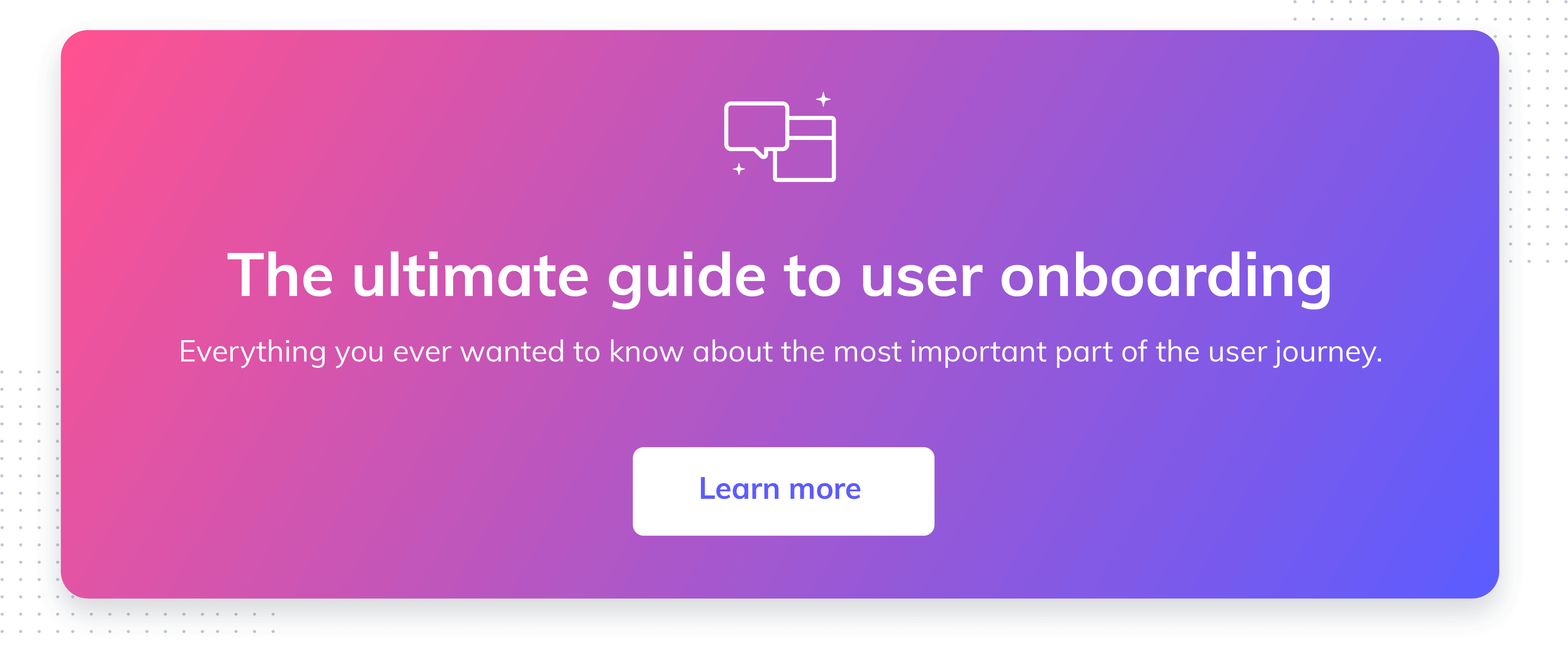
Duolingo's delightful user onboarding experience—personalization, gamification, and a friendly mascot
Language learning app Duolingo has one of our all-time favorite user onboarding experiences, and it's long overdue for a ReallyGoodUX writeup!
Duolingo's user onboarding begins with the product and ends with optional account creation. The experience is an excellent of gradual engagement, an onboarding tactic that involves postponing registration for as long as possible—usually until the moment when users must register in order to progress further. Duolingo does this expertly: Their onboarding flow guides visitors through a quick translation exercise, showing how quick and easy it is to learn a new language—before asking users to commit to the product with a signup.
Let's take a look at how they do it:
Establish user goals
After a friendly welcome from Duolingo's mascot—a friendly, guilt-tripping owl named Duo—new users are asked to set a language learning goal. Next, they're asked about their motivations ("Why are you learning a language?"). Giving users a goal to work toward increases motivation and retention, while understanding a user's reason for signing up allows Duolingo to tailor the app experience to the individual.



Segment by skill level
Duolingo knows that every user is starting from a different place in their language learning journey—some are complete novices, while others may be intermediate learners looking to brush up on skills. These users can have vastly different needs, which is why Duolingo asks users to choose their experience level before getting started. Brand new users can jump right into the 101-level material, while users who have dabbled in a language before can take a placement test.



Allow users to experience the product
After assessing a users' skill level, Duolingo drops them into a dashboard where they can begin taking bite-sized language lessons. As users complete lessons, they are given periodic prompts to create an account. Signup is optional, but becomes increasingly compelling over time as users wish to save their progress. Certain features (like leaderboards) remain off-limits to unregistered users, but these users can still access the app's core value proposition of daily language learning without creating an account.


Delight users with little details
Duolingo's onboarding would be exceptional even without the friendly owl, but there's no denying that the cute animations make the whole experience even more delightful. And they increase user motivation: A friendly wave from Duo here, an animated progress bar (or circle) there—these small details and elements of gamification add up to an experience that users want to come back to.


Why this is really good UX:
- Users are prompted to choose a learning goal. Getting users to commit to a mission before even signing up has a huge impact on how likely the user will be to stick with the platform. That's because humans have an inherent completion bias, or the desire to get things done.
- By asking a few simple questions at the outset, Duolingo is able to deliver a more personalized experience to each individual user.
- A progress bar helps set a user’s expectations of effort to complete a lesson. As users watch their progress move along, they may feel more committed to driving it to completion. Progress bars take advantage of the goal gradient effect, which suggests that people move closer to a goal, their efforts increase.
- By allowing their users to engage with the app gradually, the actual registration feels like a small step within a larger process, instead of a frustrating obstacle on their path to achieving value.
- Signup prompts occur at logical moments in the user journey—after users complete a language lesson, for example—reducing the friction typically associated with registration.

.png)
.png)
.png)